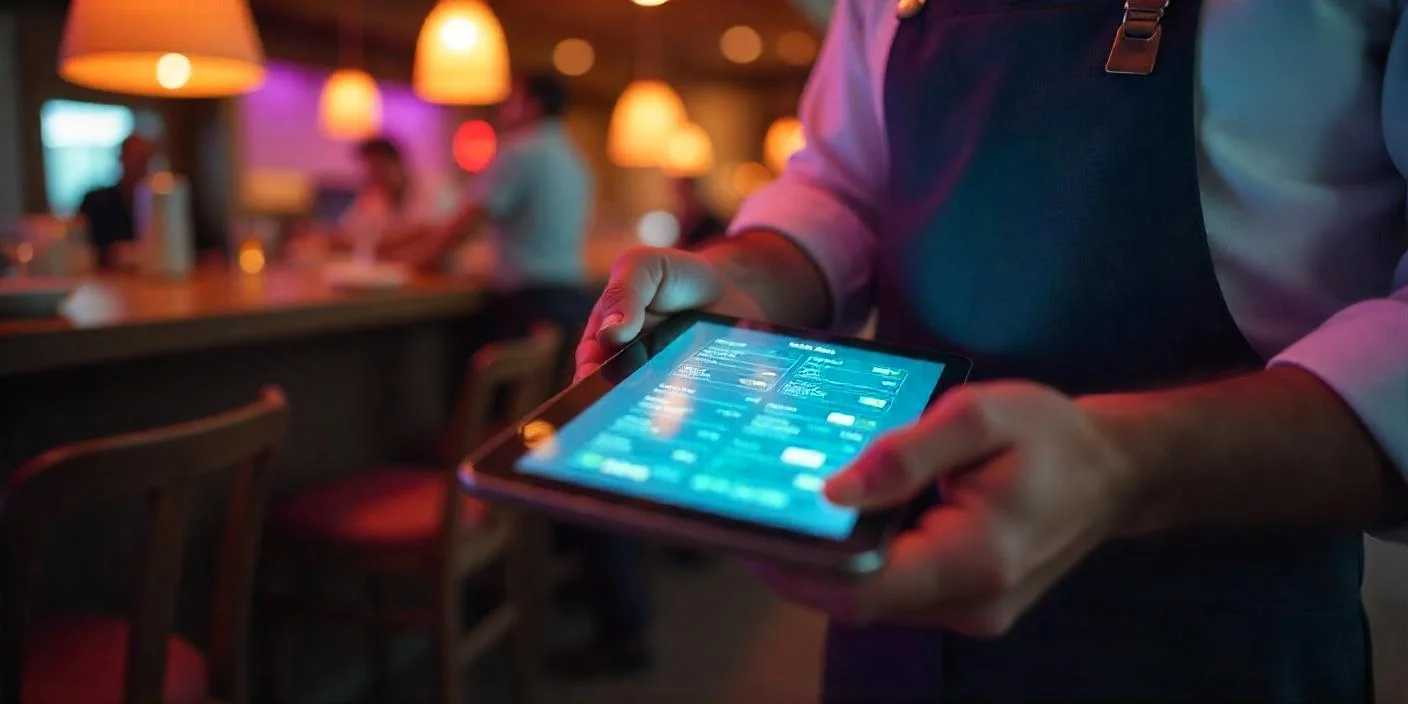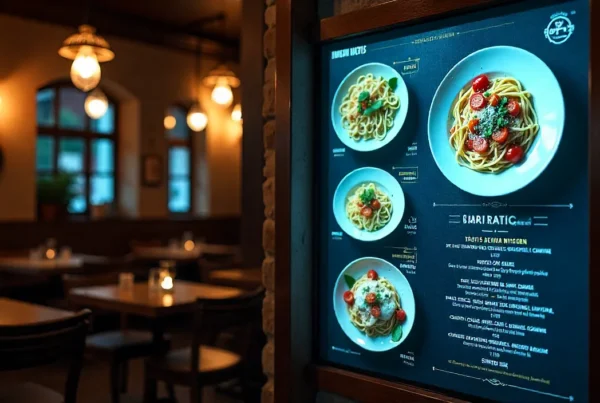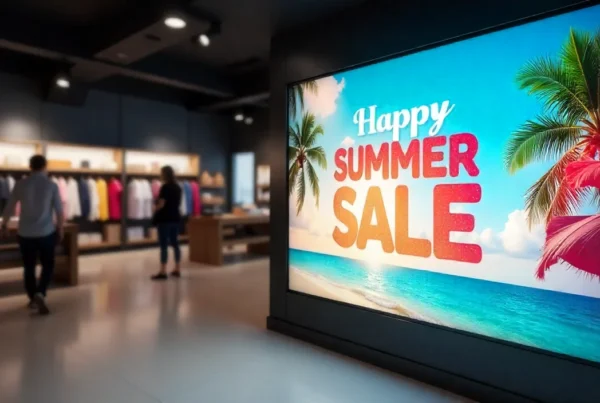In the restaurant business world, where things move very fast, first impressions begin even before the customers are seated. Electronic menu software turns the dull, inactive paper menu into an interactive, living experience and grabs the attention of diners as soon as they enter the restaurant. Using software for digital menus for restaurants, cafes, and drive-thrus, operators can cut printing expenses, increase engagement, and deliver the most recent specials in real-time, all in the same breath, with customers returning to their favorite places.

Why Modern Restaurants Need Electronic Menu Software
Dynamic & Real-Time Menu Updates
Those days of expensive reprints when an ingredient is low or a price is altered are long gone. When you use cloud-based software for e-menu restaurants, you update all your screens, including tabletop tablets and wall-mounted digital menu boards, in seconds. Such real-time agility not only keeps the menu accurate but also allows you to respond immediately to changing demand, seasonal ingredients, or popular dishes.
Increased Aesthetics and Customer Interaction
Electronic menu software can provide high-definition images and video loops that can never be matched by static print menus. With your emphasis on chef suggestions, mouth-watering food images, and animated ads, you appeal to the psychology of hunger and have your clients picturing and desiring your specialties. Stimulating graphics on the electronic menu boards in restaurants also reduce the time of making decisions, quickening the pace of the process during rush hours.
Increased efficiency in operations
It becomes a logistical nightmare to have reams of printed menus and have to distribute them to various locations. Restaurant menu software enables control of content in a single, easy-to-use dashboard, which is synchronized with POS to display real-time prices and inventory. The result? Reduced ordering mistakes, quicker table turns, and employees who are no longer tied to manual menu exchanges that rob them of an opportunity to provide five-star service.
Upselling & Growth of Revenue Opportunities
The data-based prompts of smart electronic menu software, such as asking the guest whether they would like fries with their burger or whether they want to pair an entree with our house red, can guide the consumer into making a higher-profit purchase decision. Research indicates that digital menus have the ability to increase average checks by as much as 30% because of where they place add-ons, combo offers, and time-limited offers in the menu so people will see them when they are inclined to do so.
Sustainability and Cost-Saving
Electronic menu software reduces printing waste and costs significantly by substituting paper with pixels. In the long run, restaurants will recover their technology investments by reducing supply expenses and increasing sales, all the time, in the context of a green and eco-friendly brand image that appeals to the modern-conscious consumer.
Flexibility to Multiple Applications
In addition to core menus, electronic menu board solutions are also ideal for showing specials of the day, nutritional information, social media, and loyalty program information. Cross-promoting a weekend brunch, celebrating a local event, or any other occasion of your choice, your digital menu boards turn into a flexible marketing medium that will never run out of content and keep your guests updated.
Key Features to Look for in Electronic Menu Software
Cloud-Based Content Management
The best electronic menu board software solutions use the cloud to enable you to update menus on any device, and you never need to visit the site. Introduce new products, price adjustments, or marketing campaigns into various locations in real-time with the touch of a button in a single and safe interface.
Drag and Drop Tools
The best digital menu board software for restaurants has easy-to-use, code-free editors and prebuilt restaurant menu templates. In a few minutes, customize layouts, fonts, colors, and animations to ensure your digital menu board design is always consistent with your brand identity.
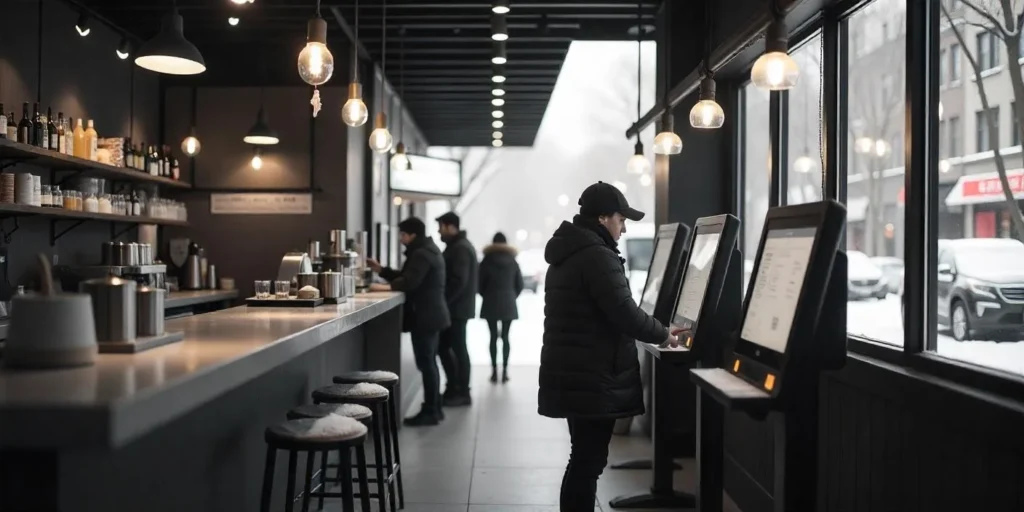
Inventory Integration POS
The smooth synchronization of your POS and electronic menu software ensures that prices, availability, and out-of-stock warnings are transferred to all displays automatically. This close coupling avoids the frustration of guests and keeps kitchen work going.
Multimedia & Interaction Assistance
The use of high-resolution images, video loops, and a touchscreen enhances the dining experience. From self-ordering kiosks to tabletop tablets, select an electronic menu solution that will engage guests with rich media and in-built payment options.
Scheduled rotation & Analytics
Most-ordered dishes, peak ordering times, or the like are actionable insights that can give you a chance to perfect your menu strategy. Automated content scheduling also means that breakfast menus change to lunch, happy hour specials show at 4 p.m., and dessert promos go out at exactly the time they are most likely to sell.
How to Choose the Right Electronic Menu Board Software
When choosing electronic menu software for your restaurant, consider the following important factors:
• Budget & Scalability: Less expensive packages may be appropriate to one cafe, and the enterprise packages offer complex functions and bulk discounts to multi-store chains.
• Hardware Compatibility: Make sure that your electronic menu board software is compatible with your current TVs, tablets, or dedicated media players.
• Ease of Use: Seek one that has a smooth learning curve so that managers can make changes in menus without the assistance of a technician.
• Customer Support & Training: Your digital menus will be ready to run with reliable onboarding, documentation, and responsive tech support.
• Customization & Branding: The most excellent software is one that fits the aesthetic of your restaurant and not the other way around.
Implementation Best Practices
• Pilot & Iterate: Begin with a single outlet or form of display—pilot your electronic menu board software, take in the reviews, and hone it before doing a complete implementation.
• Staff Training: Make investments in brief training sessions so that servers and managers are sure to update content and troubleshoot small problems.
• Content Strategy: Use your digital menu boards as a marketing tool—use specials and rotate them frequently, offer high-margin items, and change visuals to avoid screen fatigue.
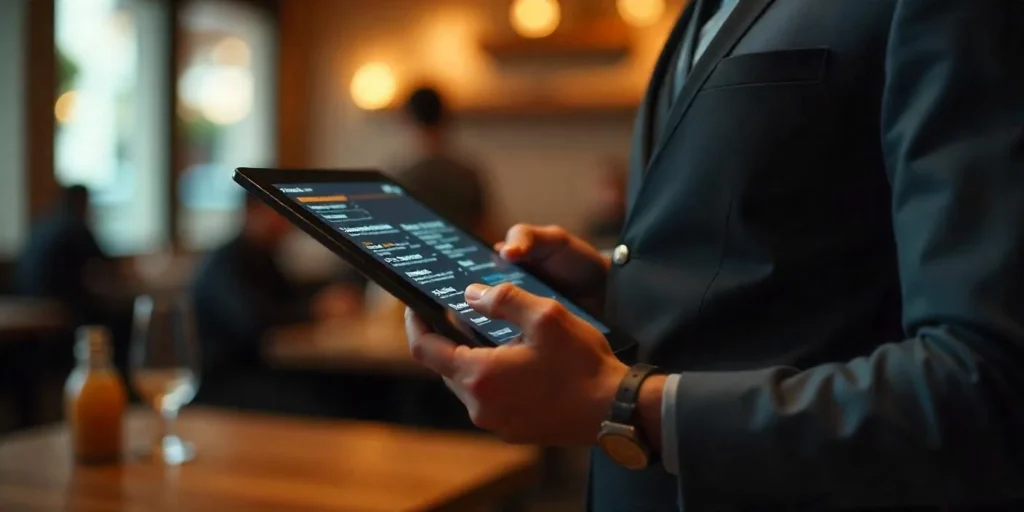
Next Steps: Future-Proof Your Menu Strategy
Adopting electronic menu software is not only the next step but also a strategic move to a more efficient, sustainable, and guest-satisfied world. Selecting the appropriate electronic menu board software and integrating digital menu boards for restaurants can help you remain flexible, economical, and always ahead of the pack. Are you ready to make your menus come alive? Discover the best-rated electronic menu software on the market and begin serving smarter, not harder.
FAQs: Electronic Menu Software & Digital Menu Boards
What exactly is electronic menu software?
A cloud-based system that transforms traditional paper menus into interactive digital screens that can be updated in real-time, have interactive features, and can be integrated with POS.
How much does digital menu board software cost?
The price for digital menu board software is based on entry-level plans, which start at around $20/month and go up to enterprise solutions costing hundreds of dollars per month and up; hardware (screens, media players) is a separate investment.
Can I update my menus remotely?
Definitely—cloud-based restaurant digital signage allows you to send updates to any device anywhere that has internet connectivity.
Do digital menus work in drive-thrus?
Yes! Drive-thru digital menu boards are widely used in many quick-service restaurants to make fast upsells and real-time promotions.
Will digital menu boards boost sales?
Moving images, product cross-selling, and content placements can boost AOV by 30 percent.
What screen sizes should I consider?
Indoor screens are usually 32-55 inches; drive-thru and open dining areas are better equipped with large 65-inch+ screens or video walls.
Is software integration with social media possible?
Most electronic menu systems allow live social feeds, reviews, and user-generated content to make your brand more human.
How quickly can I launch an electronic menu system?
Using ready-made restaurant menu templates, you can actually get basic menus up and running in just a few hours; a complete hardware and software implementation can take a few days.

